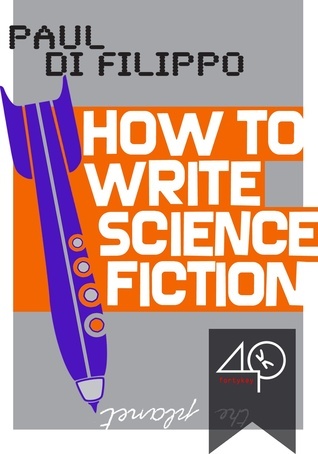What do you think?
Rate this book


39 pages, Kindle Edition
First published June 2, 2011
Se hai letto Smart Magma, Wikiworld o Ritorno al XX Secolo (o magari Un anno nella città lineare), forse hai già un'idea.
La scrittura di Paul Di Filippo è ricca di invenzioni, spesso spiazzante, molte volte umoristica, espressionista. Non è la fantascienza che ti aspetti, di certo.
Piuttosto è un continuo mashup (parola a lui cara) di riferimenti alla musica pop, al cinema, alla tradizione letteraria. Il tutto condito da un'immaginazione potente e -per definizione- mai frenata.
Il risultato è che ogni storia è un'avventura, soprattutto per il lettore. Un'avventura a diversi livelli, alcuni dei quali (per usare un'altra parola cara a Paul) da decifrare.
In Scrivere Fantascienza, saggio che raccoglie tutta la teoria che lo ha ispirato, Di Filippo inizia proprio spiegandoci perché essere tirchi e usare una sola idea per opera, al massimo due, non è necessariamente la soluzione migliore.
Anzi, dice, «La fantascienza degna di questo nome dovrebbe essere folle e pericolosa, non moderata e innocua».
Non a caso il titolo vero del saggio (che però non ci sarebbe mai stato su una copertina sola) è: “Come scrivere fantascienza sbalorditiva, stracolma, multiplex, massimalista, ricomplicata, a banda larga”.
E non è nemmeno tutto il titolo, perché l'originale del manoscritto conteneva anche una citazione dalla canzone “Give It Away” dei Red Hot Chili Peppers (“Realize I don’t want to be a miser / How come everyone else wanna keep it like the kaiser?”). Ma in fondo è inutile stupirsi: Paul -dai un'occhiata alla gallery perché merita- è anche l'uomo capace di spedire con grande costanza fantastici esempi di mail art (o di discutere con me, la mattina di Pasqua, la ricetta delle lasagne in un lungo scambio di email).
In ogni caso, la continua ricchezza di temi e di inventiva fa di Di Filippo uno degli autori di science-fiction più difficili da classificare.
Ma se ti interessa esplorarne il metodo creativo, se non ti spaventa un approccio radicale e caleidoscopico alla creazione di storie, anche fuori dall'idea di genere, Scrivere Fantascienza potrebbe appassionarti.
E se vuoi, puoi anche discuterne con Paul su Facebook.